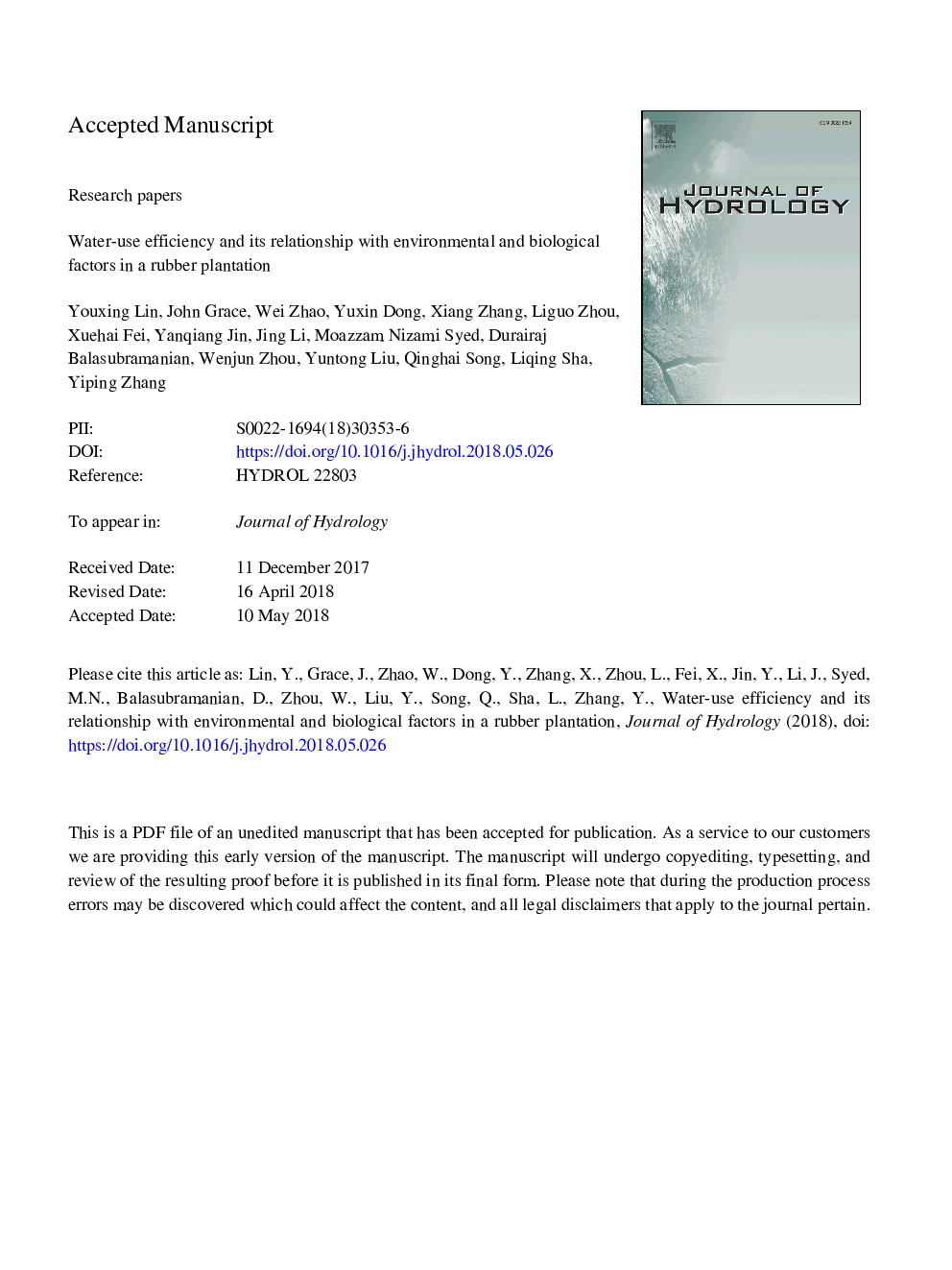| Article ID | Journal | Published Year | Pages | File Type |
|---|---|---|---|---|
| 8894567 | Journal of Hydrology | 2018 | 39 Pages |
Abstract
Water-use efficiency (WUE) at the whole-plant level plays as an important role as an indicator of both the water-use strategy of the plant, and the ecophysiological processes linking the carbon and water cycles. However, the variation in the annual pattern of WUE, the interannual trends, and the regulating factors of WUE in rubber plantations remain poorly understood. Here, we used a four-year (2013-2016) continuous biometric survey along with sap flow data recorded at a monthly resolution to examine the annual and interannual dynamics of WUE and the relationships of WUE with environmental and biological factors in rubber (Hevea brasiliensis) plantations in Southwest China. The results showed that (1) there was no definitive pattern in WUE between April and December, but the peak WUE values generally occurred around August; (2) the multi-year mean WUE was 2.34â¯Â±â¯0.19â¯gâ¯C·kgâ1 H2O, and a negative correlation of WUE to photosynthetically active radiation was found at the interannual scale (râ¯=â¯â0.962, Pâ¯<â¯0.05); and (3) a moderate, significant and parabolic relationship of WUE with air temperature (R2â¯=â¯0.40), net radiation (R2â¯=â¯0.37) and growth rate of the diameter at breast height (R2â¯=â¯0.35) was observed at the monthly scale during the growing season (Pâ¯<â¯0.001). These findings indicate that WUE might be regulated by factors affecting the carbon sequestration rather than water consumption, and it will provide a deeper understanding of the ecohydrological and coupled processes between the carbon and water cycles of rubber plants.
Related Topics
Physical Sciences and Engineering
Earth and Planetary Sciences
Earth-Surface Processes
Authors
Youxing Lin, John Grace, Wei Zhao, Yuxin Dong, Xiang Zhang, Liguo Zhou, Xuehai Fei, Yanqiang Jin, Jing Li, Syed Moazzam Nizami, Durairaj Balasubramanian, Wenjun Zhou, Yuntong Liu, Qinghai Song, Liqing Sha, Yiping Zhang,
